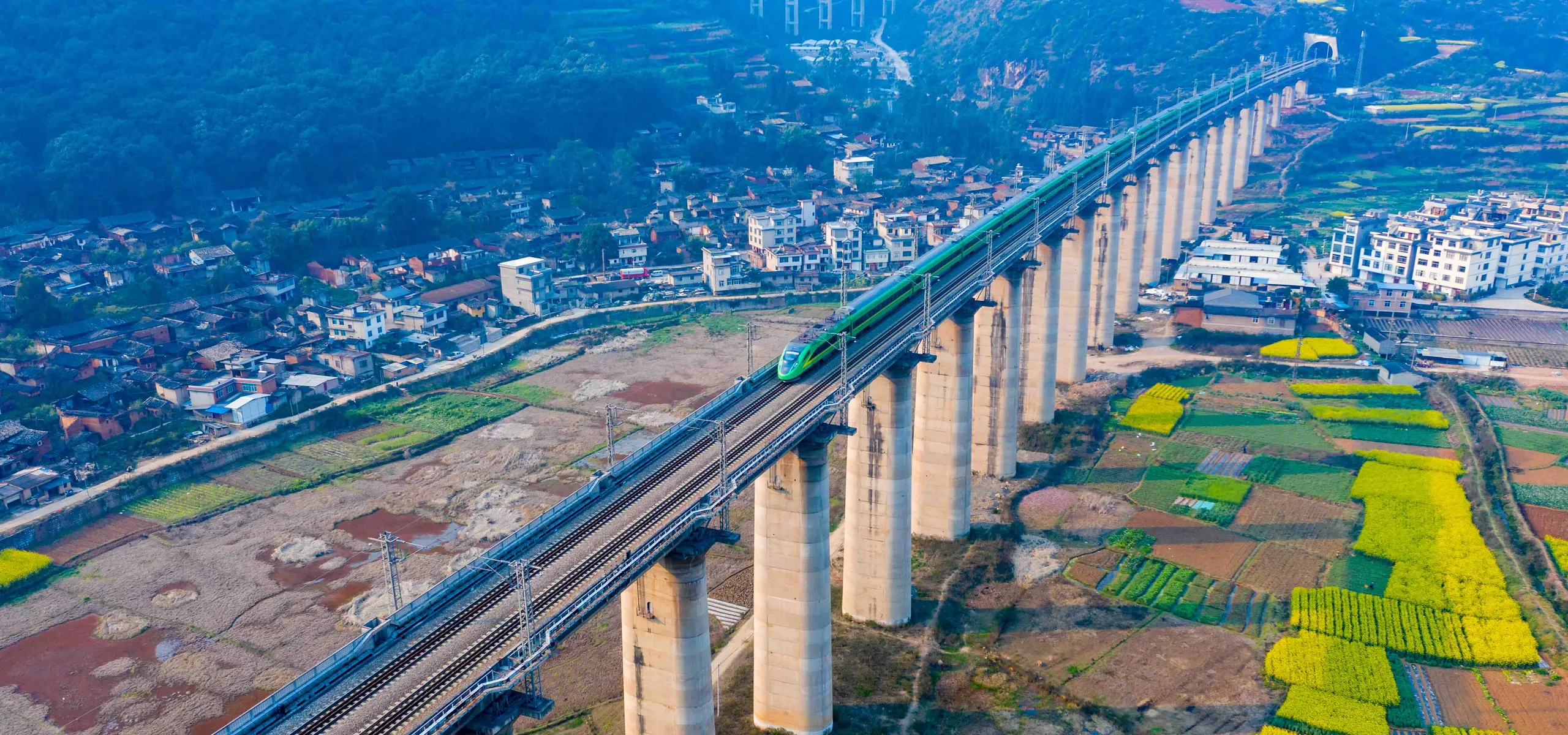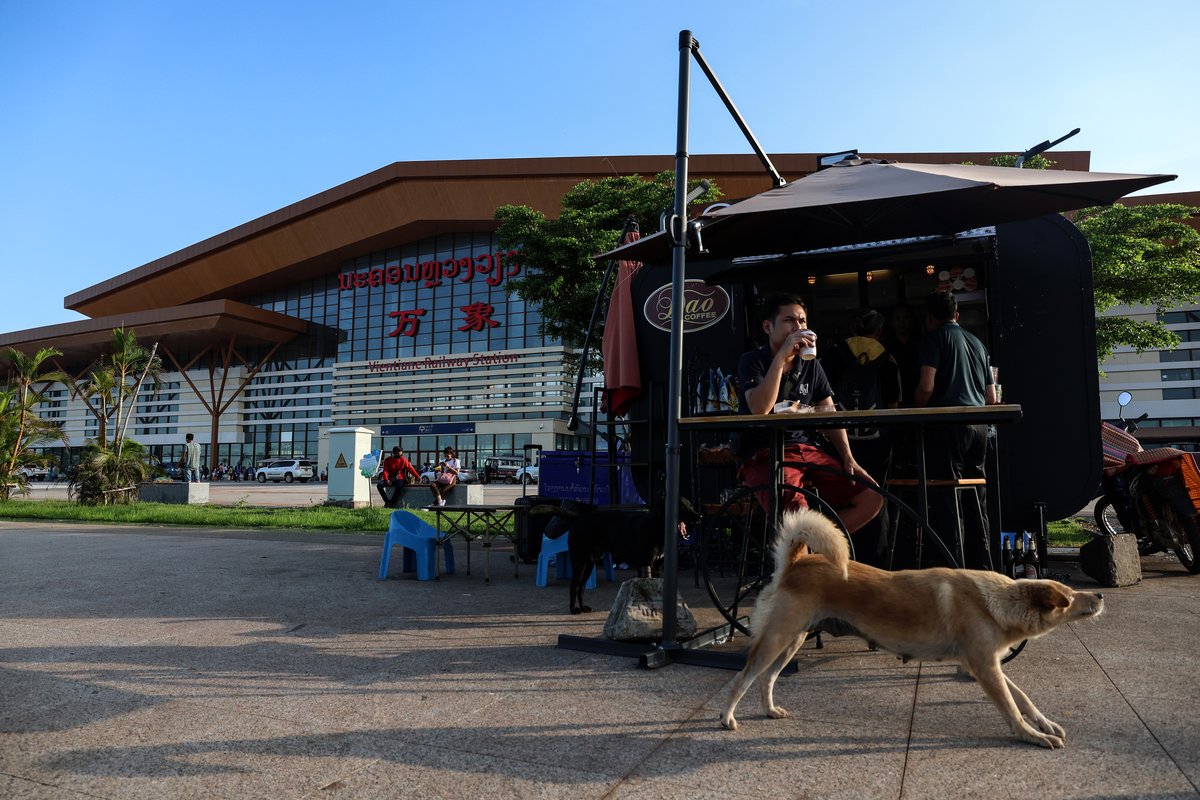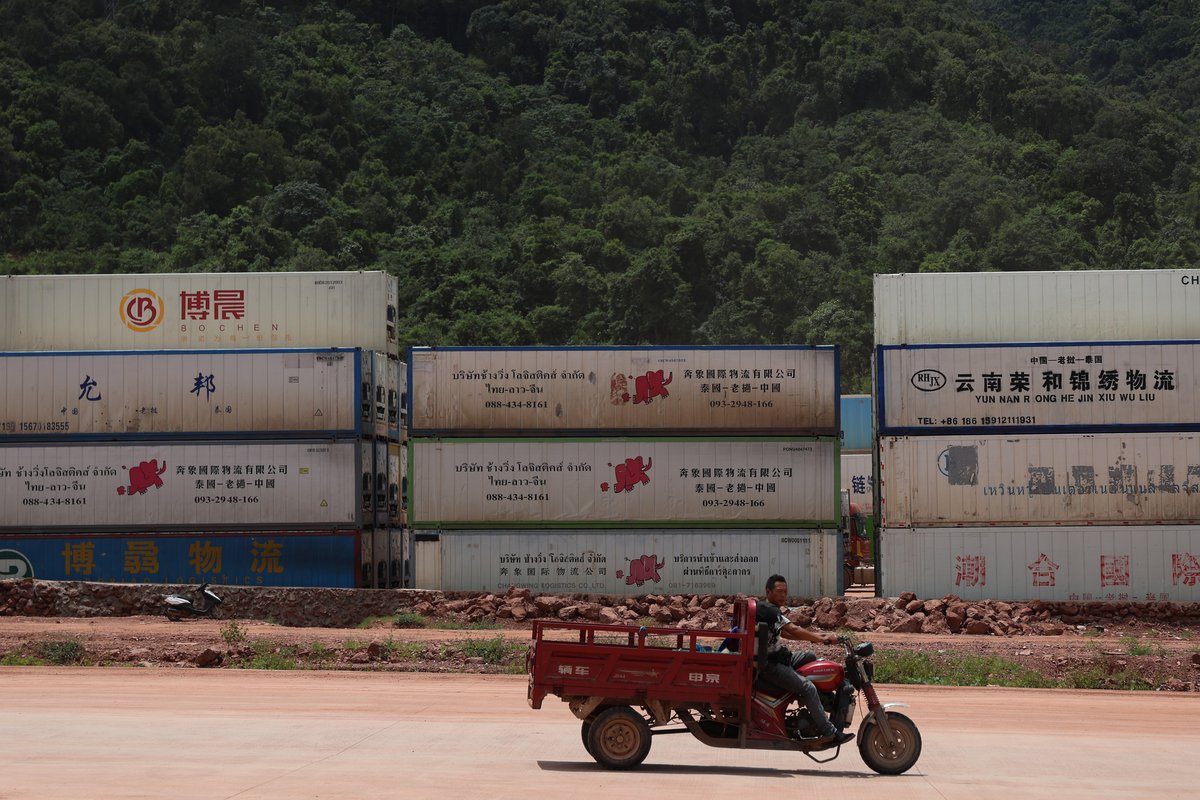On board the 40-billion-yuan railway project that links China’s Yunnan province with Laos
Despite the early hour of my scheduled departure, Kunming South Railway Station is already teeming with people when I arrive. I’m no stranger to high-speed railway travel in China, but this is the first time I’m going international so I’ve come an hour early.
I quickly wish I’d arrived even earlier having underestimated the school holiday crowds. Sweating as I watch the minutes tick by on my phone screen, I begin to feel like a contestant who’s been shunted onto the set of a game show without fully grasping the rules.
The e-ticket I received in my inbox days before stipulates I can simply claim my ticket manually at the check-in gate. But as I show the ticket attendant my passport, she scratches her head. After a long while, she calls over a colleague who unleashes a barrage of rapid-fire questions I struggle to understand.
Eventually, her supervisor intervenes, gives me the OK, and personally escorts me to the platform. “Sorry about that...She’s new” she explains.
“Just like this train route, right?” I reply.
“Exactly.”
So begins my journey from the provincial capital of China’s Yunnan province, to Vientiane, the capital of Laos—by train.
The cross-border express
Built for 40 billion yuan as part of China’s Belt and Road Initiative, the Lao-China Railway (LCR) is a colossal cross-border project linking two countries across mountainous terrain. Eventually, the line may be extended further through Laos, then on to Thailand, Malaysia, and ending in Singapore. It is a gleaming symbol of Chinese ambitions to link up with the region and boost trade, tourism, and growth across Southeast Asia.
Though the railway was completed in December 2021, cross-border services had been severely limited until earlier this year because of strict border entry controls China imposed during the Covid pandemic. Despite those restrictions, the Chinese part of the railway still transported 13.93 million passengers and 18.38 million tons of freight from its opening up to April this year, according to state media outlet Xinhua.
The D887 I’ll be riding on stops at seven stations between Kunming and its terminus Vientiane, covering some 1,035 kilometers in 10 hours and 28 minutes. First-class tickets are 864 yuan, while second-class costs 542 yuan; in comparison, flights generally exceed 2,000 yuan for direct trips.
As I make my way on board, staff greet passengers in English, the first of many hints that this train is a little different from most domestic Chinese trains. While the interior design is similar to high-speed trains in China, Laotian announcements are provided alongside Mandarin and English, and Laos’ curly script underlines Chinese characters on signage.
Chinese staff are in green and only present as far as Mohan, a border town in Yunnan’s Mengla county where I’ll go through customs, while the Laotian staff are in blue and are set to remain onboard for the entire trip.
The first stretch of the journey from Kunming to Pu’er is blissfully tranquil as there is only a smattering of passengers onboard. The mountain scenery unfolds as the train traces its way through ridges and valleys.
It’s a fine day. Our route bisects towering mountains blanketed with wild forests and tea plantations. As I doze with my head against the window, the experience is more like gliding than the clickety-clack of regular trains, cultivating a dreamy lethargy that helps suppress some of my travel nerves.
While there is also a coach service from Kunming to Vientiane, it’s not nearly as efficient as the train, and as we pass a highway, I don’t envy anyone braving the bus, as I’d read it takes 24 hours to make the same journey by road.
Borderlands
As we near the border, more passengers board and fill the empty seats. I notice pockets of people speaking Lao as well as Mandarin and other Chinese dialects.
As we roll into Mohan, an attendant foists a pamphlet into my hands that details instructions on how to enter my personal information into an app; I’ll be provided a QR code, which will allow me to pass through customs.
Alighting the train, everybody flees the carriage at breakneck speed before dawdling on the platform in a directionless manner. Railway staff are on hand to shepherd us through a series of corridors. I walk fast, and am first in line, proudly presenting my QR code to a ticket inspector.
But something is amiss. “Visa?” the Chinese official says in English. “Visa on arrival,” I implore, pointing to the Laotian checkpoint behind her. Laos is so close, I can smell it, but I begin to fear I might not make it. “No,” she says, “you must have an E-Visa.”
She writes down an address in Chinese and instructs me to give it to a driver lurking at the door. I’m told that the train pauses long enough for me to get my visa on arrival at the old land border crossing, then get to Boten station, on the other side of the border, to re-board the same train.
This is an unplanned detour. Kunming’s mild climate is worlds away from Mohan’s oppressive heat and I have a backpack and a suitcase to drag to the driver’s van.
I’m quoted the outrageous price of 100 yuan to travel roughly 10 kilometers but I accept it, having little choice. The vehicle lacks air-conditioning, but I’m treated to hot gusts of wind and red dust as the windows wind down.
My driver drops me off outside a building that looks like it is being reclaimed by the surrounding jungle. Inside there’s a line of people waiting to have their documents checked and stamped by two customs staff. I’m through in under 30 minutes.
Exiting the customs building—now in Laos—I’m confronted with a swarm of taxis and rickshaws. I provide my intended destination in English but am met with blank stares so I revert to Chinese. “High-speed station?” I stammer in Mandarin. “Mei wenti. No problem,” a driver replies, before leading me to his tuk-tuk which I ride alongside two American tourists.
Like many border towns, Boten is a place inhabiting two worlds. Street signs and storefronts are all bilingual—Laotian and Mandarin—while locals are better versed in Chinese than they are in English.
It’s a strange feeling to be in a different country after three years of lockdowns and travel restrictions in China. Having gotten so used to China’s digital payments, I realize that I have no physical currency to pay the driver. Fortunately, the Americans I’m sharing the ride with kindly pay on my behalf.
My sense of being somewhere new dissipates at Boten Railway Station, which looks like a typical Chinese high-speed railway station: tiled floors, high ceilings, and walls of glass panels, although a triangular roof invokes a Southeast Asian temple. “WeChat Payment Accepted Here,” reads a sign at one shop, so I’m able to stock up on snacks.
The remaining 422 kilometers from Boten to Vientiane are bereft of drama, head-scratching, or any further detours. The train passes through 75 tunnels and over 167 bridges as it traverses this mountainous region. It takes just four hours to get to Vientiane, rather than the 15 hours it would have taken by road.
New horizons
Since the official opening of the cross-border service in April 2023, over 4,000 people have taken the train each day, on average. For the Laotian economy, which relies heavily on tourism, those visitors are extremely welcome, especially after the Covid-19 pandemic crippled visitor numbers. Laos will need those tourists, along with the boost in trade and investment, to recoup the 1.8 billion US dollars Laos agreed to pay for the project; around 10 percent of the country’s GDP in 2021. China covered the remaining 70 percent of the project’s cost.
Things have been looking up this year. Over 143,312 people from China visited Laos in the first three months of 2023, according to Laos’ Ministry of Information, Culture, and Tourism. In 2019, the peak of Chinese tourism to the country, over 1 million people visited.
At Luang Prabang, the former royal capital of Laos and a UNESCO World Heritage site, a woman in her early 20s sits next to me and introduces herself in English. “Is this your first time to use the LCR?” she asks. “Depending on the weather, it could take a full day to get from Luang Prabang to Vientiane [approximately 300 kilometers] before the train,” she tells me.
The LCR is the reason she decided to become a tour guide for visiting Chinese. She showcases her Mandarin skills before switching back to English. “You must try the laarb in Laos,” she tells me. “It’s our national dish.”
We arrive at Vientiane an hour before sunset. Outside, locals are posing for selfies in front of the monumental railway station, a shining symbol of technological modernity in sleepy, landlocked Laos. Work to extend the line to Vietnam’s Vung Ang seaport is meant to begin later this year, then perhaps it will stretch further to Bangkok and beyond.
Even though it’s not yet dark, the neon lights of the city can be spotted in the distance. I hop in a tuk-tuk and head into a town still being transformed by the railway that’s brought Chinese investment, trade, and now (after the pandemic) tourists too. In a few years, I might be able to travel all the way from Kunming to Singapore. For now, though, I head in search of some laarb.















